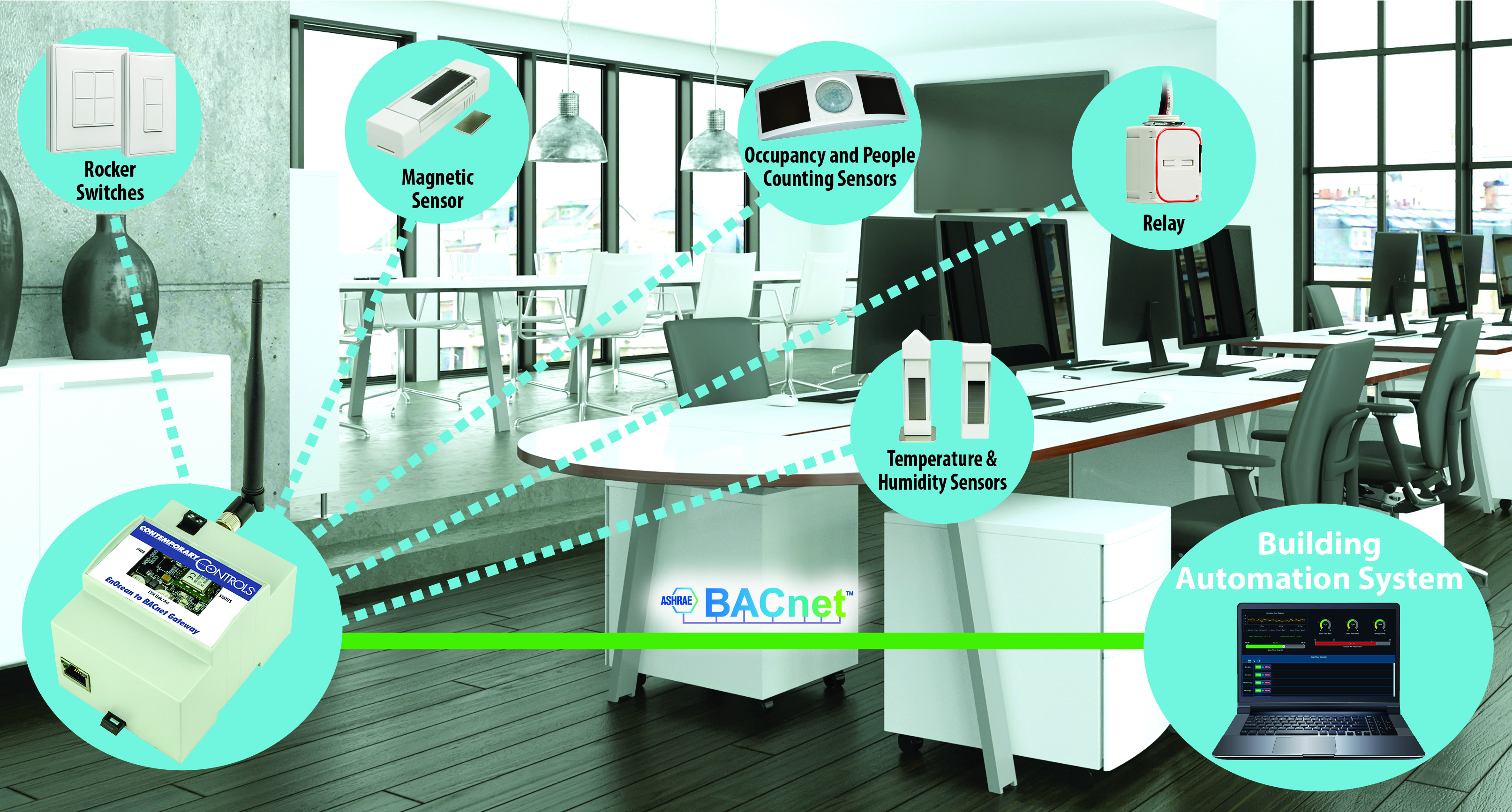Control Network Newsletter

Enhance your BAS with EnOcean Devices
EnOcean devices can improve performance and sustainability of a building automation system (BAS). Most EnOcean devices are self-powered and do not require batteries, external power sources, or communication wires. They can deliver reliable wireless data transfer in locations where it is difficult or costly to run wires, making them ideal for retrofit projects as well as new buildings. Since many BASs do not support EnOcean, an EnOcean to BACnet gateway, such as Contemporary Controls' BASGE-EN868 or BASGE-EN902, can seamlessly integrate EnOcean devices into a BACnet system.
EnOcean wireless devices include sensors that monitor temperature/humidity, light, and occupancy, and wall switches that control lights or position window blinds. The EnOcean devices described in this article (except the relay) do not require external power or communication wires which make it easy to incorporate them into a BAS.

Contemporary Controls' EnOcean to BACnet gateways allow EnOcean input and output devices to be linked to and controlled by devices in the systems' BACnet network. © Contemporary Controls. Individual images of the rocker switches, magnetic sensor, occupancy and people counting sensors, relay, and temperature & humidity sensors are printed with permission from EnOcean GmbH. © 2024 EnOcean GmbH. All rights reserved.
Rocker Switch
A rocker switch is a pushbutton device that is powered by the physical act of pressing its buttons. The switch is typically used to turn on/off EnOcean controlled lights or to position blinds. The data can also be made available to the BAS for other purposes, such as occupancy reporting or enabling/disabling fans. In addition, the EnOcean gateway can receive this data and make it available to the BAS supervisor/head-end.
Magnetic Sensor
A magnetic sensor can be useful for monitoring windows. For example, zone heating or cooling can be disabled when a window or windows are opened. Solar-powered units feature integrated energy storage that allows operation for several days in total darkness.
Temperature and Humidity Sensors
Temperature/humidity sensors are solar powered and feature integrated energy storage. These sensors can be added to zones to provide additional temperature data. For example, an EnOcean temperature sensor can be brought into the BAS supervisor to help monitor the temperature for threshold values. The humidity feature can also be used when zones are lacking humidity sensors.
Light Level Sensor
A light level sensor can detect the level of available natural light from outside windows that may affect the comfort levels of a zone.
Multisensor
A multisensor measures temperature, humidity, window, light level, and motion to deliver a combination of data for the BAS.
Air Quality Sensor
An air quality sensor provides the status of a zone's air quality, measuring CO2 levels, ambient temperature, and humidity. Solar-powered units use ambient room light with a battery back-up for periodic low-light conditions.
Relay
An EnOcean relay can control LED lights and includes 0-10 V output to control brightness. The rocker switches can be used to turn the lights on and off and to adjust the brightness. The relay must be wired into the light, but there are no communication wires, and the rocker switches communicate directly with the EnOcean relay. With an EnOcean gateway, the BAS can control all the lights in a facility. For example, at night, the BAS can turn off lights left on by occupants.
For more information on EnOcean devices, including the switches and sensors shown in this article, visit the EnOcean Alliance.
To learn more about our EnOcean to BACnet Gateway, visit the EnOcean to BACnet Gateway product page.